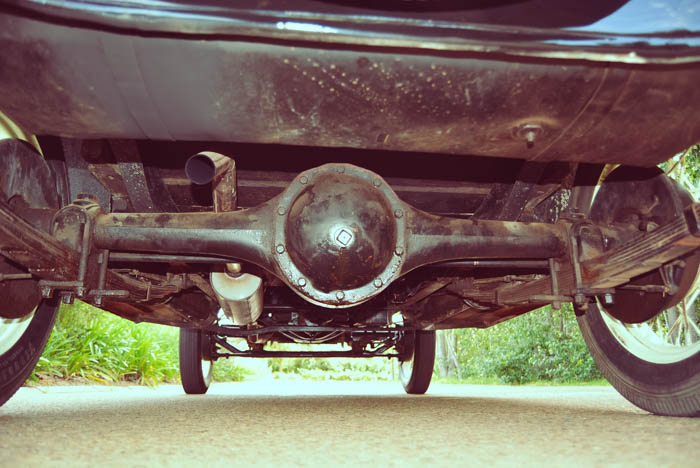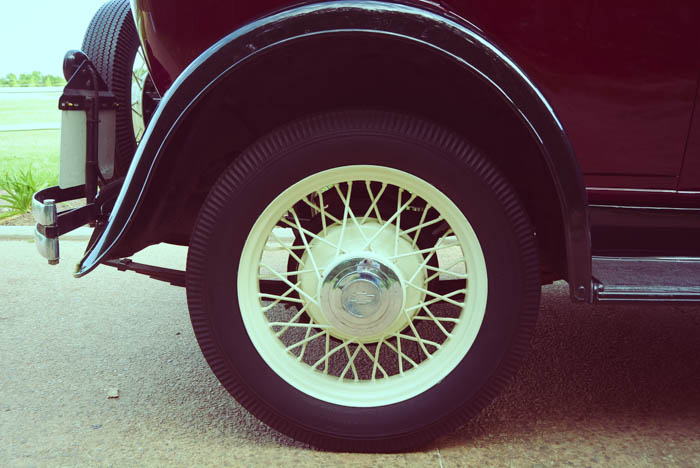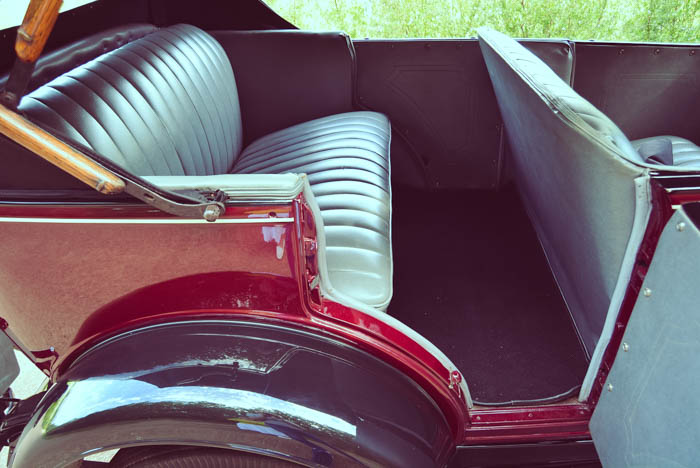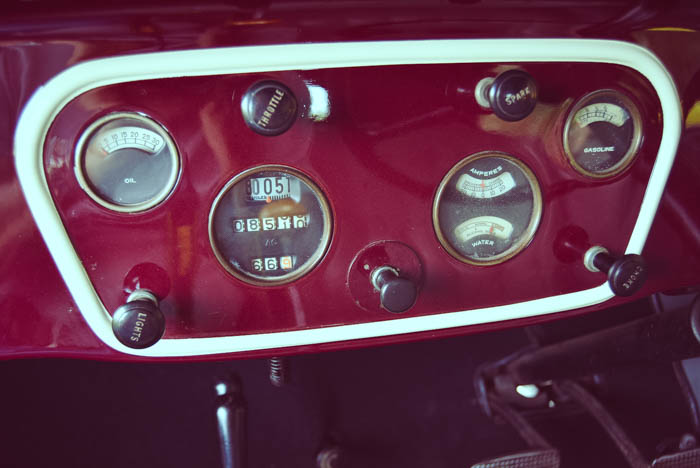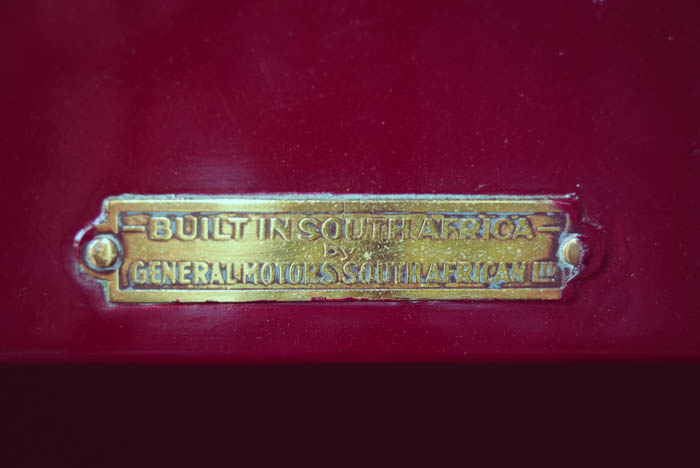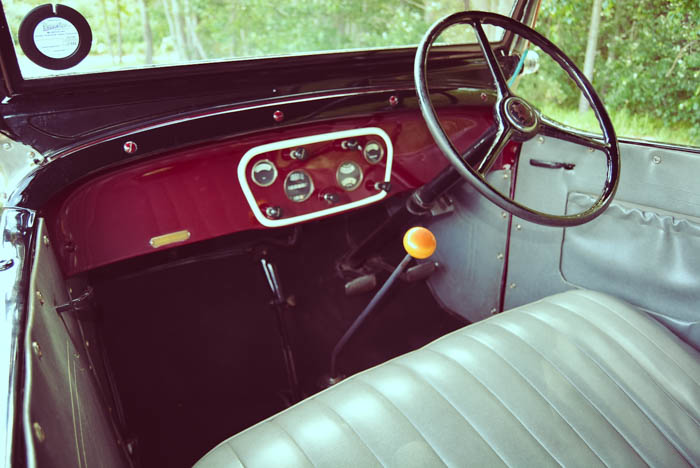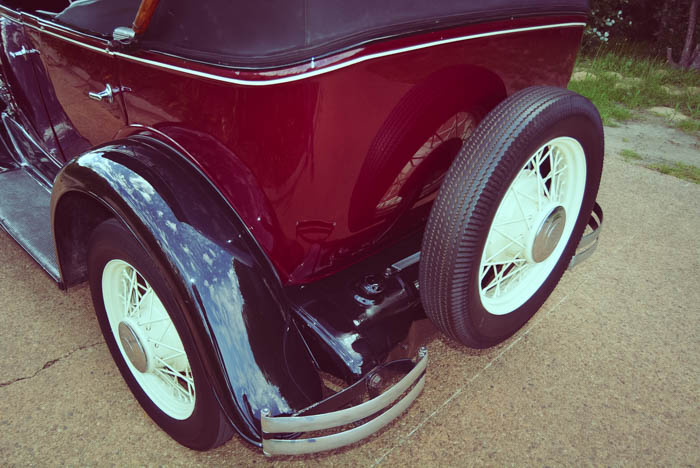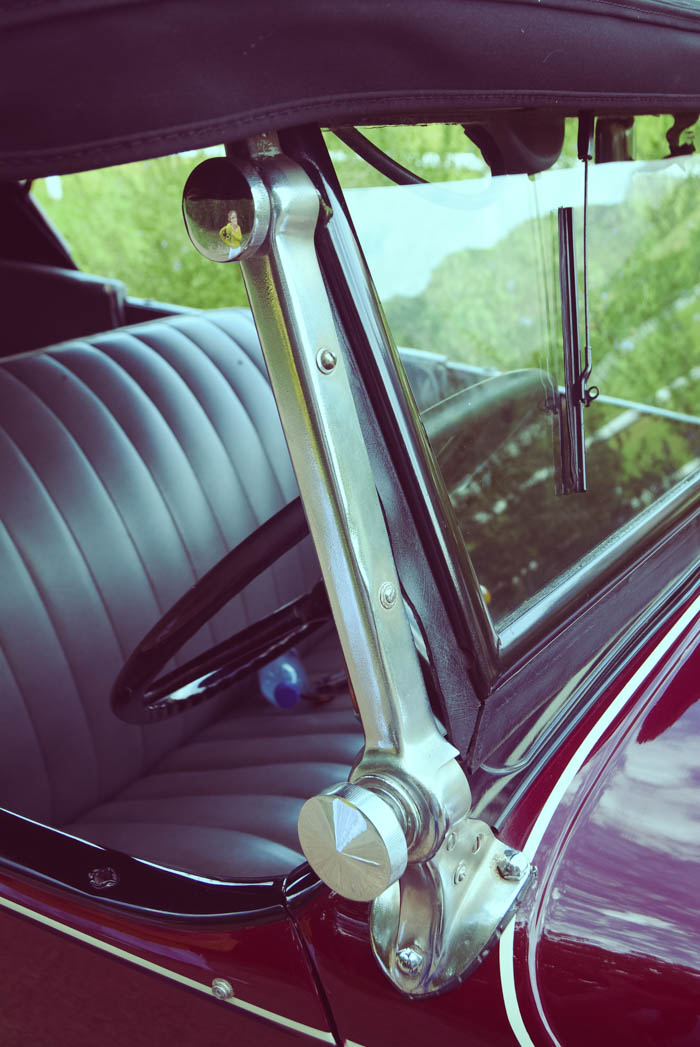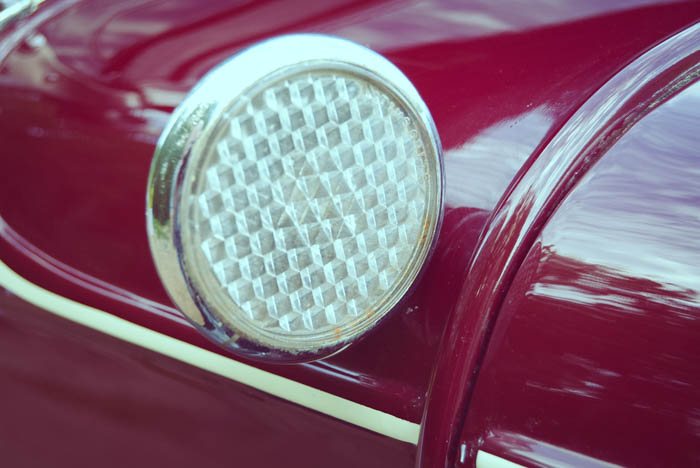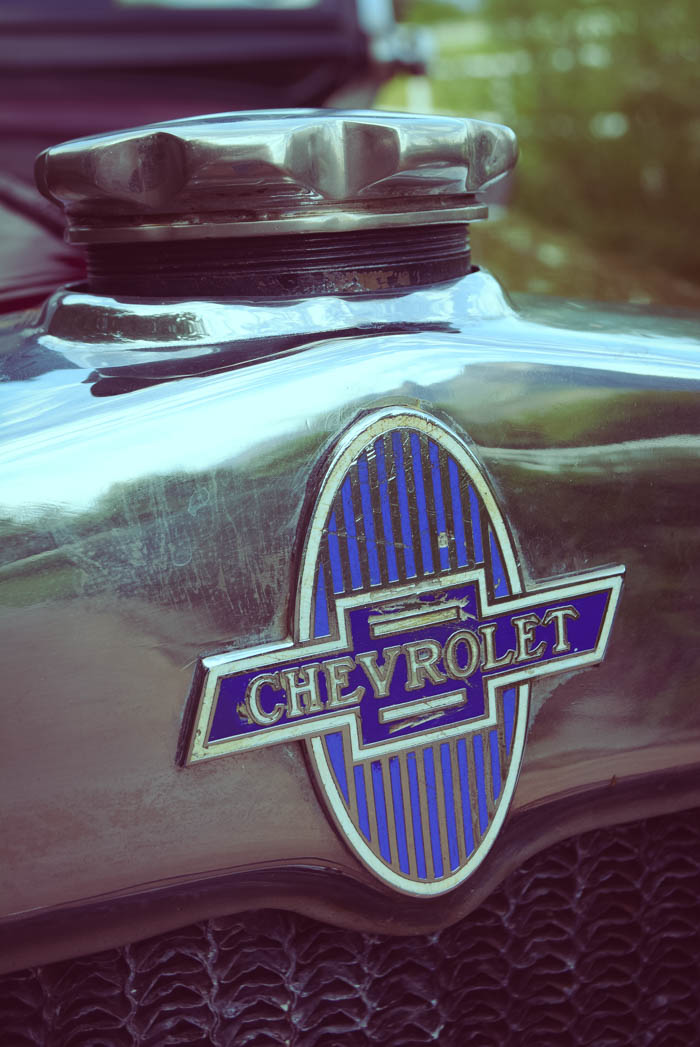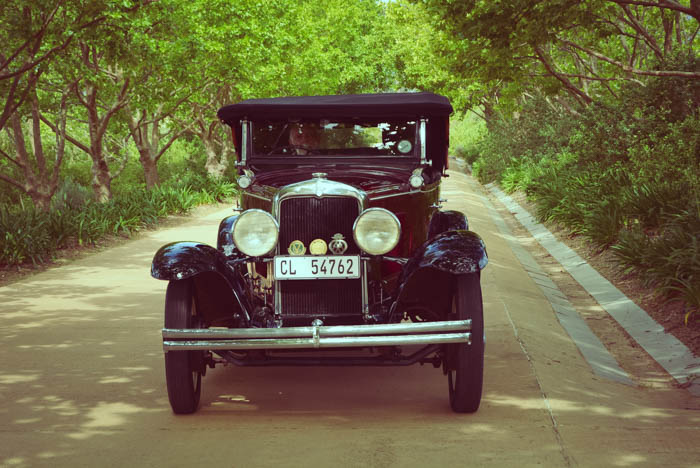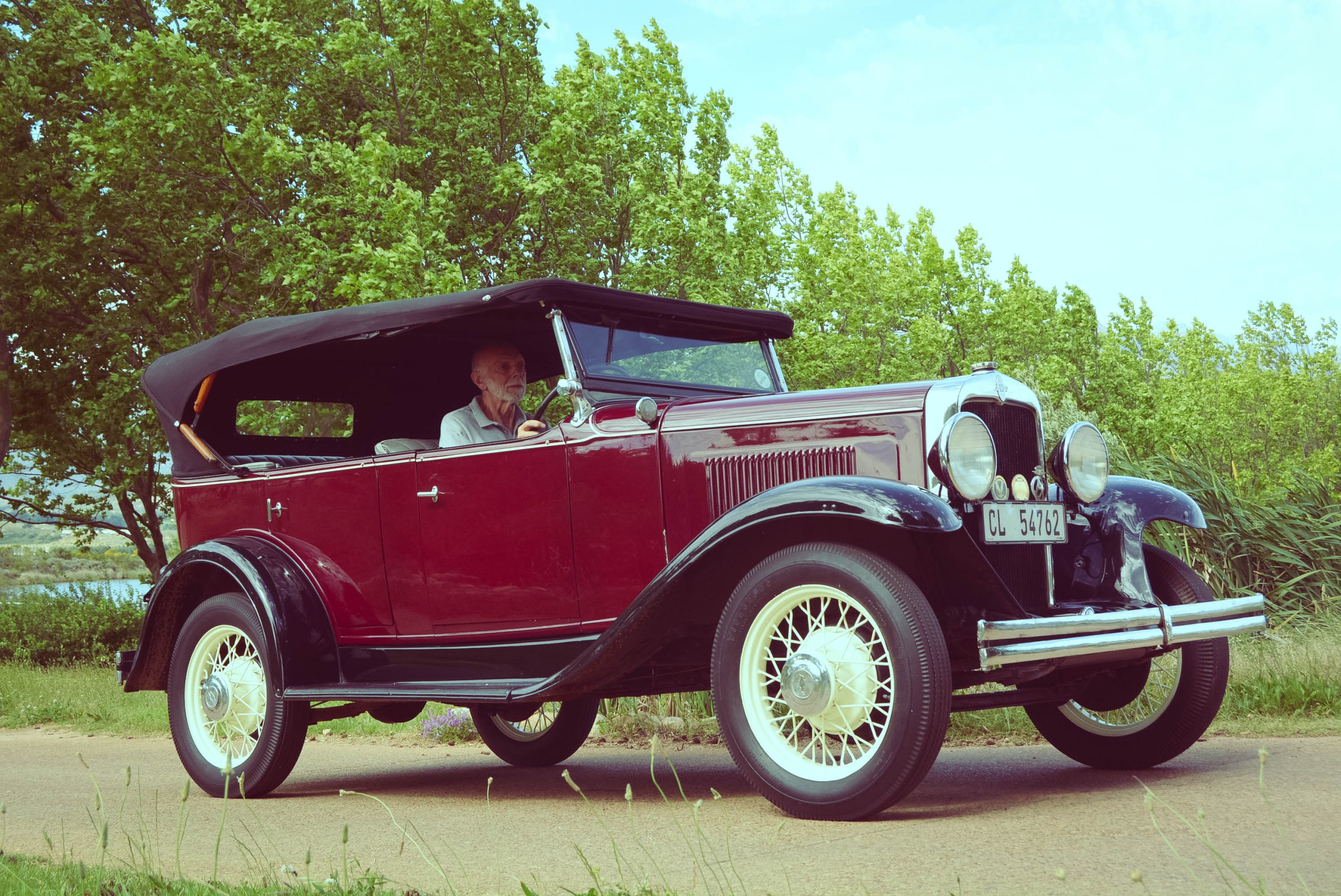
23 Nov Collection in action: Chevrolet Universal Series AD
As we prepare to bid General Motors a sad farewell from our shores, it seemed fitting to drive one of the earliest products it produced, a Chevrolet.
Entering the local market with imported vehicles in 1913, Chevrolet soon gained popularity and a limited amount of local production began in 1926 in a rented old wool store in Darling Street, Port Elizabeth, by which time it was estimated that one-sixth of all cars on the country’s roads were Chevrolets. Then in 1928, GM purchased 36 hectares of land in Kempston Road to build a new plant and one of the first models to roll off the Kempston Road facility was the Universal Series AD, which was a development of the 1929 International Model AC.
Styling-wise there was little difference between the two; what was far more significant lay under the bonnet where the Series AC’s four-cylinder engine was replaced with GM’s first mass-produced in-line six-cylinder, the introduction of which was a marketing masterstroke because GM was able to boast that the Chevrolet offered “a six in the price range of the four”.
Known as the ‘Stovebolt Six’ because the bolts that held the engine together resembled the bolts that were commonly used to assemble woodstoves, the 3 179 cm3 engine used forged rods and cranks, the rod bearings lubricated by the traditional ‘splash’ method while the three main bearings were pressure lubricated. Internal components were made to last; the pistons were cast-iron and the crank weighed almost 22 kilograms. Fed by a Carter single-choke carburettor and with a low 5:1 compression ratio, initially the six produced 34 kW at 2 600 r/min but for 1930 bigger intake and smaller exhaust valves along with a new manifold raised this to an even 50 hp, or 37 kW. Transmission was a non-synchromesh three-speed.
The chassis carried a drop-forged I-beam front axle and a semi-floating banjo-type rear axle suspended on semi-elliptic leaf springs with self-adjusting shackles and Delco-Lovejoy hydraulic shock absorbers. The full ball-bearing worm-and-gear steering mechanism was complemented with a lower-set three-spoke steering wheel said to ‘assure a restful driving position’. Internal expanding ‘water-proof’ drum brakes were fitted to all four wheels.
Described on the sales brochure as “The Greatest Chevrolet in Chevrolet History”, it was not only the engine that gave the Series AD a cutting edge. GM introduced colour bodywork as a breakaway from the industry’s generally adopted principle of ‘any colour as long as it’s black’. For 1930, among the upgrades that the brochure claimed made the Series AD “Smoother – Faster – Better” was the addition of a Fisher slanting, non-glare windscreen. The fuel gauge was now incorporated into the instrument panel, and all the gauges became circular with dark backgrounds. The speedo was a horizontally-revolving drum type. Tyre size was reduced to 4,75×19 on wire-spoke wheels to help give ‘the entire car a fleeter, racier appearance’.
The equipment level was quite high, including such niceties as a theft-proof ignition lock, dual-beam headlamps with foot-operated dip switch, automatic stop light, rear-view mirror, automatic wiper, a motor-driven klaxon horn and a complete tool kit. Ten different body styles were offered, all made by Fisher, and FMM’s 4-door 5-seat Phaeton is just one of the 1 713 built during the 1930 model year. It was described as surpassing “all Chevrolet’s previous achievements in providing outstanding open car value. Stylish, roomy and convenient – it accommodates five passengers in comfort. The seats have been lowered, the seat backs tilted, and the cushion springs have been made deeper and more resilient. The top is easily raised and lowered”. Selling for $495 and despite the fanfare, for some reason, from a total build of 864 243 it was the least-sold model in the line-up by some margin. Yet the Universal had a lot going for it, being typical of 1930s styling but with some colourful appeal.
Climbing aboard, I was soon reminded of a feature of many vintage cars, namely that the driving position is often cramped for anyone of above-average height. Ergonomics were not thought of so when operating the clutch my left knee would be an impediment between the steering wheel and gear lever. Only Series ADs with closed bodies had an adjustable driver’s seat.
Pull a knob on the dashboard; depress the floor-mounted starter button and the Stovebolt ambles into life with characteristic ease. Pedals are conventionally laid out, clutch and brake protruding almost horizontally from the bulkhead with the very short-travel accelerator on the floor. The upright wood-knobbed gear lever falls to hand – mind the knee – and the 1 030 kg Chev pulls away with the kind of instant momentum that is a given with big capacity/low stressed engines. Pottering around, the Chev is a bit clunky but find some open road, get into top gear and its attributes rise to the fore.
One of the joys of driving a phaeton is while the collapsible hood offers plenty of welcome protection from the sun, the open sides still afford the pleasure of al fresco motoring – the view is uninterrupted and the sounds and smells of the countryside can be experienced and enjoyed… along with the steady exhaust rumble of the engine as it bowls the Chevy along. The ride is comfortable and being relatively compact – the wheelbase is 107 inches (2 718 mm) – the steering not too heavy, even when manoeuvring. The brakes need a firm shove for which the pedal angle is none too helpful, but as ever with vintage motoring in modern times, a bit of forethought is necessary to preclude a panic stop.
The Stovebolt Six, also often referred to as the ‘cast-iron wonder’, proved to be more than durable. In its original guise it was made until 1936 but thereafter continually upgraded until finally phased out (by GM Brazil) in 1998, ending a truly remarkable life span of 70 years.
Universal by name, universal by nature, the Series AD was perfectly suited to GM’s early production history of Chevrolets in South Africa, offering a value-for-money package in a variety of forms. Sadly, that tradition has now drawn to a close.
NB: From the beginning of December, FMM will have an extensive collection of Chevrolets on display.
